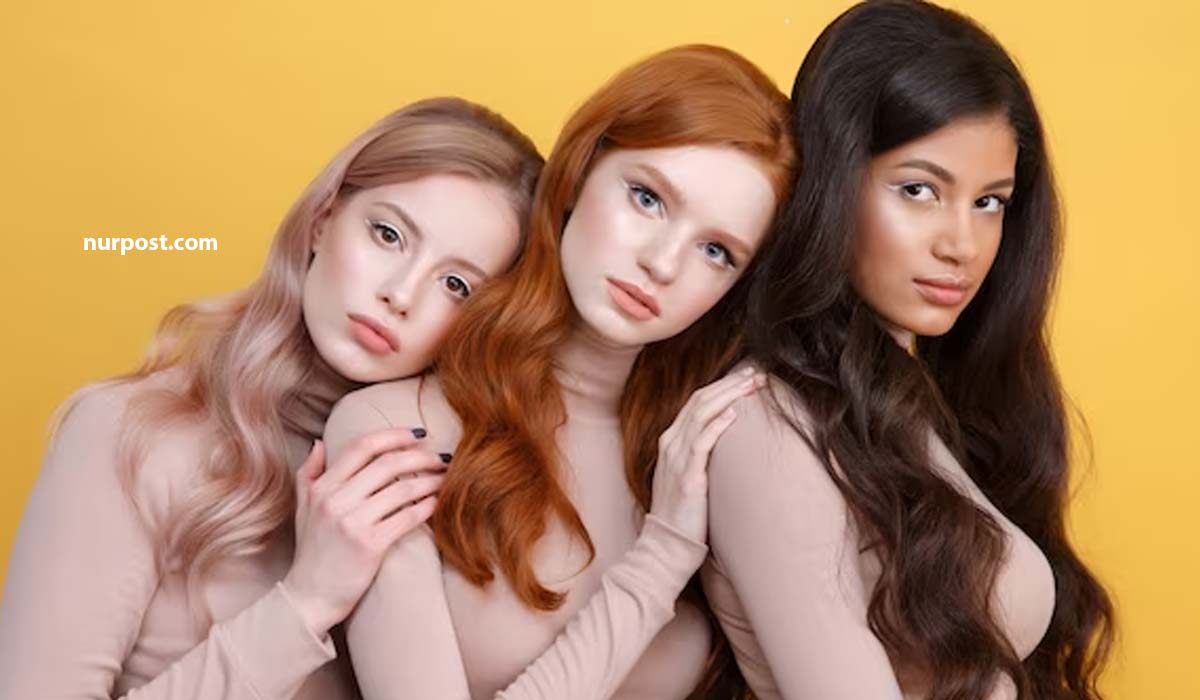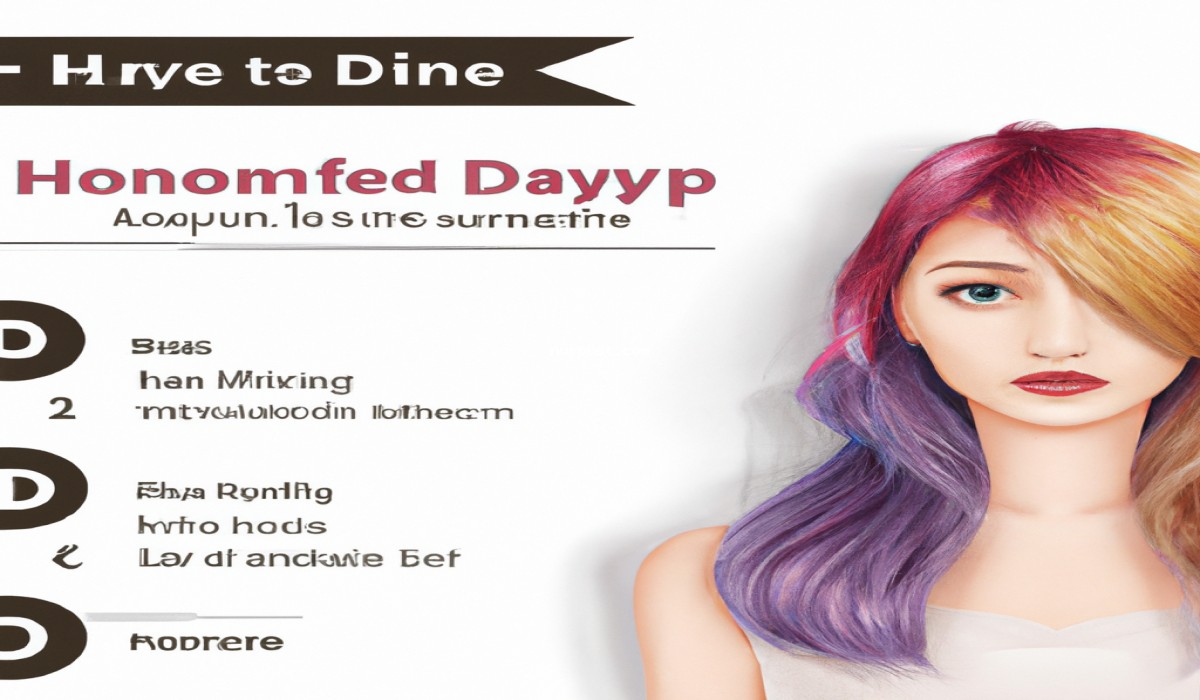How to Avoid Common Delays in Hair Dyeing (Latest Guide) Are you ready to get a new hair color but don’t want to waste precious time dealing with common delays when dyeing your hair?
How to Avoid Common Delays in Hair Dyeing
We’ve all been there in the middle of a hair dyeing session only to find out that something has gone wrong and you don’t know how to fix it. But don’t worry! We’ve put together the ultimate guide for how to avoid common delays when dyeing hair so you can get the perfect color every time.
From understanding the best methods for coloring your hair to the necessary equipment you’ll need, we’ll provide you with all the information you need to know to successfully color your hair and get the look that you’ve always wanted.
Understanding Your Hair
One of the most important things to understand before dyeing your hair is your natural hair type. If you’re unfamiliar with your hair type, this will need to be determined before you start.
Knowing updates prior to dyeing your hair will help to ensure that the dye you choose will be effective and won’t cause any difficulties while trying to achieve your desired color. The three most common hair types are:
1. Fine hair
2. Medium hair
3. Thick hair
How to Avoid Common Delays in Hair Dyeing
Fine hair is usually the most difficult to color as the molecules in the dye can easily get lost in the finer strands. In addition, products like bleach that can be used to lighten hair will also have a difficult time taking hold, resulting in a duller color or longer application process.
Medium-textured hair usually does better when it comes to coloring, as the molecules in the dye can adhere to the strands more easily than with fine hair. This type of hair can usually be dyed or bleached in one application, making it the ideal choice for those looking for a single-process color.
For those with thick hair, the cuticles are strong enough to hold onto the molecules of the dye, resulting in a rich and vibrant color. Depending on the thickness of the hair, the dye may need to be applied more than once to ensure an even coloring all over.
Choosing the Right Hair Dye
Once you’ve determined your hair type, it’s time to think about which type of dye you should use. When dyeing your hair at home, the most common type of dye is permanent color. Permanent color is designed to penetrate the hair cuticle and remain in the hair until it grows out. It’s a good choice for those looking to make a dramatic change in their hair color or cover up gray hair.

Semi-permanent color is another popular choice for dyeing hair. This type of color will add pigment to the hair but won’t penetrate the cuticles like permanent color. Semi-permanent color fades over time and will usually last between 4-6 weeks. It’s a great choice for those who want to make subtle changes to their hair color or refresh an existing color.
Before and During Application
Once you’ve chosen the right type of dye, it’s time to prepare for the actual dyeing process. There are some steps you can take before and during the application to help ensure a smooth process and perfect results.
Before Application
Even though all hair dye kits come with instructions. It’s a good idea to do a little research before you start dyeing your hair. Knowing the basic principles of hair coloring and understanding the entire process will help to ensure that the dyeing process goes as smoothly as possible.
It’s also important to think about the end result. Think about the colors you’ve liked in the past. If you’ve had any bad experiences with a particular color or type of dye. All of this should be taken into consideration when choosing a particular dye or type of hair color.
How to Avoid Common Delays in Hair Dyeing
When purchasing your dye, make sure to buy the right developer to ensure an even coloring of your hair. Some dyes require a developer with a higher or lower volume than others. So make sure to read the instructions on the package carefully.
During Application
Now that you’re ready to begin coloring, it’s important to have all of the necessary tools on hand. You’ll need gloves, a hair cap, a brush to apply the color, an old towel, hair clips, and a timer to make sure the dye remains on for the right amount of time.
Before beginning the dyeing process, make sure to apply a base coat to the areas around your hairline. This helps to protect the delicate skin around your ears and forehead from coming into contact with the dye.
Once a base coat is applied, you can begin the coloring process. Make sure to follow the instructions on the package to ensure an even application of the color and to make sure the dye isn’t left on your hair for too long.
How to Avoid Common Delays in Hair Dyeing
When dyeing your hair, it’s important to remember to blow-dry your hair after washing off the dye. This helps to remove any excess dye and even out your color.
Avoiding Common Hair Dye Delays
By now, you’ve familiarized yourself with the hair coloring process and the necessary tools you’ll need to help achieve perfect results. Here are some surefire ways to avoid common delays when dyeing your hair so you can get the look you want every time.
Soften Your Hair Before Dyeing
Before you begin the dyeing process, it’s important to remember to soften your hair. This involves deep conditioning or using a mask to nourish and hydrate your hair. Softening your hair helps the color to penetrate the strands easily and evenly, resulting in a beautiful and vibrant color.
Avoid Over-Processing
It’s important to remember that you should never over-process your hair. If you leave the dye on your hair for too long. It can lead to over-processing, resulting in damaged, dry hair that’s prone to breakage. It’s important to make sure you keep an eye on the timer and wash off the dye as soon as the time is up.
Use the Right Type of Dye
Different types of dye should always be used according to your natural hair type. Fine-textured hair is more fragile and requires a gentler approach. So use permanent color for fine hair types. For those with medium-textured hair, semi-permanent color is recommended. Thick-textured hair will need a thicker dye to help achieve even coloring all over.
Avoid Too Much Bleaching
When using bleach to lighten your hair, it’s important to avoid too much bleaching as this can damage your hair. Bleaching your hair more than twice isn’t recommended as this can result in dry, brittle hair that’s prone to breaking.
Use a Heat Protectant
To keep your hair safe from the heat, it’s important to use heat protectant products. A heat protectant helps to prevent damage to your hair from styling tools and ensures that your hair is kept in top condition.
Avoid Sun Exposure
It’s also important to avoid direct sun exposure when you’ve just dyed your hair. Direct sunlight can cause fading and discoloration. So it’s best to stay in the shade and avoid using styling tools that use direct heat when possible.
Always Wear Gloves
When dyeing your hair, it’s important to remember to wear gloves at all times. Not only will this keep the dye from staining your hands. But it will also help to keep your hands from becoming dried out from the dye and developer.
Conclusion
Getting the perfect hair color can be tricky. But it doesn’t have to be if you take the necessary steps to ensure that the process goes as smoothly as possible.

By understanding your hair type, using the right type of dye. Avoiding common delays when dyeing your hair. You can achieve the look you’ve always wanted with little to no effort.
How to Avoid Common Delays in Hair Dyeing
So the next time you’re considering dyeing your hair. Remember to keep these tips in mind and you’ll be sure to achieve perfect results.
FAQs
What type of dye should I use for fine hair?
For fine-textured hair, permanent color is the best choice as it will help to ensure that the color penetrates the strands evenly without being too harsh on the hair.
How often can I dye my hair?
As a general rule, it’s best to wait at least 4 weeks between colors as this will allow your hair to recover and remain in good condition.
What type of heat protectant should I use?
Look for a heat protectant that contains UV protection to help protect your hair from the sun’s damaging rays.
Is it safe to use bleach on my hair?
If used correctly and within the recommended time frame, bleach is generally considered safe. However. it’s important to remember to not leave the bleach on your hair for too long. As this can be damaging to the hair.
Can I use other styling tools on my hair after I’ve dyed it?
Yes, but it’s important to make sure to use low-heat tools and keep direct sunlight away from your hair as much as possible.
Is it okay to use a hair cap when dyeing my hair?
Yes, it’s perfectly safe to use a hair cap when dyeing your hair. This helps to ensure that the dye remains evenly distributed throughout your hair and prevents the dye from staining your skin.
